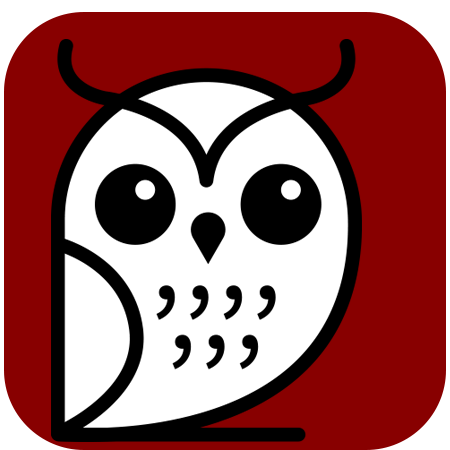Exposing the benefits of what we sell in an appropriate and attractive way can be the difference between having prospects become customers or not. For this reason, in this post I will talk about how to make effective advertisements..
The case of a girl who sells courses
I have an acquaintance who is dedicated, among other things, to selling Internet courses.
I am part of her “followers” but at the same time I have a slightly closer relationship with her. One day, I saw one of his advertisements, in which he was selling a long show. An important investment, which I was not interested in buying because of the subject it was about. I noticed that his other followers, among whom were many people who admired and appreciated it very much and even said that it had changed their lives, were not showing as much interest in buying it, unlike their past courses. This was a shame because the product was good, I just wasn’t knowing how to communicate its utility.. And in that communication failure, he was missing out on sales.
A possible solution
I decided to write to him and tell him that in the PDF that he was sending with the syllabus of the course, something fundamental was missing that could make more people sign up: I was not putting what the course was going to bring people, what were the advantages of investing the money. As soon as I explained to him how to communicate and expose the benefits of his product in an attractive way, he implemented it, and people started signing up a lot more. In his words, he avoided “leaving money on the table.”
It is easy to lose sight of the fact that when people are buying something, it is not the product or service itself that they are buying, but rather what it will allow them to have and do in their lives.
What do we earn when we buy courses or workshops?
For example, when we buy products such as online courses, workshops, guides, we do not acquire the digital file, but the expectation we have about how learning its content and implementing it will improve our lives or our business.
I have seen time and time again people with great products, with amazing results, who fail to adequately communicate it when describing what they sell (either on a sales page or on their social networks) because they focus too much on the characteristics of their products and not on what they are going to bring to people.
Exposing the benefits of our products in such a way that our sales increase becomes much easier if we take into account three concepts:
- The curse of knowledge
- The linguistics of benefits
- Two categories of benefits
- The rule of three
The curse of knowledge
In the book Made to Stick, the authors explain how difficult it is to remember what it feels like not to know something we already learned. (Sobre todo si ni siquiera recordamos cómo o cuándo lo aprendimos). This is a “curse” because it prevents us from imagining what life is like for our potential customers without our product, and therefore decreases our chances of connecting with them from the needs they currently have.
We forget what it feels like to not be an expert in the subject that we are an expert on. The really tricky thing about the curse of knowledge is that even when we are aware that it exists, we can fall for it, especially if we surround ourselves with people with a similar worldview to ours, or with colleagues who talk about similar topics.
Advertisements and the obviousness of knowledge
An important aspect of the curse of knowledge is found in the trap of obviousness. When we think about creating a list of the benefits of what we sell, it is common for us to be stopped by the feeling that what we are saying is obvious and everyone knows it. However, it’s worth writing a rough draft of the more “obvious” benefits and showing it to people who don’t do what we do to get feedback.
Most of the time, the most attractive benefits to potential customers are the ones we don’t write down because they are so “obvious” to us from our very biased perspective. When it comes to benefits, none are overly obvious and it’s best to leave them explicit rather than have people read between the lines and figure them out. In addition, this helps buyers’ expectations of our product to be aligned with the results we create.
Linguistics of benefits
What linguistic components are the most useful to communicate the benefits of what we sell? Although this depends on each business, each communication medium and each product, as a general rule the ideal is to write the benefits as follows:
- With affirmative sentences (not negations).
- In the second person singular, “you”.
- In simple future, “you will”, “you will have”.
- Using both concrete nouns and verbs other than “to be”
Let’s see two examples:
Advertisements, example 1
Our cooking course is practical and useful. The 20 hours of recipe videos are packed with no-difficult tips for making quick and tasty dishes.
Advertisements, example 2
Thanks to our cooking course, you will create dishes with the exact flavor you like. You will master, from the hand of experts in the field, culinary tricks to enjoy for the rest of your life. You will have plenty of time to relax in the afternoons.
Ad Analysis 1
- It is not written in second person
- Does not use the simple future
- It does not express benefits unrelated to the verb ‘to be’
Ad Analysis 2
- Verbs are very specific actions that the buyer is going to experience thanks to the product.
- Use very specific and concrete words (not generalizations, as in ad 1)
- So “practical” and “useful” in the first example become “master culinary tricks.”
- “Quick dishes” becomes “plenty of time to relax”.
What sounds more attractive? Which of the two options conveys that people’s needs are going to be satisfied?
The rule of three
Another important element for effective advertisements is the Rule of Three. Going back to the second example paragraph, we see how there are three main verbs, “you will create”, “you will dominate” and “you will have (time)”. This is intentional. When human beings read concepts in groups of three, we not only remember them more, but we process them better.
So, proposing benefits in threes makes them much more relevant to the reader/listener and, therefore, more attractive, since people prefer to hear that something is going to be useful for three things instead of just one.
Rereading the example paragraph that doesn’t follow this rule (“Our cooking course is hands-on and helpful. The 20-hour recipe video is packed with easy tips for making quick, tasty dishes”), it feels like something is missing. This rule also applies to bulleted lists, it doesn’t need to be prose to work. Now that we are clear about the shape of the benefits, let’s see what their content should be.
Does your product reduce a discomfort or help to obtain a wish?
Beyond the well-known and cited Maslow pyramid of needs, surely you have a list of categories in which your product can fit. Each of these categories help us by advertising and showcasing the benefits of what we sell.. Ask yourself:
- What ailments or discomforts does it help to reduce or remove?
- What goals or aspirations of the people does it contribute to fulfilling? The more specific, the better.
Although we can share items from both lists on our sales page and/or on our social media, it is recommended that each brand discover which of the two categories works best for them. From my point of view, focusing on pain points is a practice that has been used extensively in American marketing for the last century, and recently there is a more marked tendency in advertisements to inspire people instead of reminding them of what hurts them or what they lack.. Some say that it actually works better.
It is advisable to look at the content we generate for our brand and identify if we tend to emphasize pain points or inspire our prospects, as well as testing to see which one works best with our specific audience: we can experiment by substituting our pain-based content for inspiration “sponsored” content and see if our sales change. While you can’t always do this due to the nature of certain products, it’s worth keeping in mind.
In conclusion…
- In this article I talked about the difference between selling by explaining the characteristics of a product or service and exposing the benefits of the same.
- This is extremely important because a person can trust our brand, follow all the steps of the customer journey until they reach the sales page and lose interest if they do not see, in a clear and concise way, how will make that purchase improve your life and/or your business.
- This is a communication problem that is solved by following the recommendations in this text, which are only some of the most effective and practical:
- Break the curse of knowledge, explaining what seems obvious to us and keeping in mind that we are very biased with respect to what people do or do not know about our work and our brand
- Write benefits as affirmative sentences, in the second person singular, in the simple future tense, with non-coupling verbs, with concrete nouns and adjectives, and in threes
- Let each benefit speak to a point of inspiration (or pain) that the client can recognize as the satisfaction of a need they have in their life. And lastly:
- Avoid proposing any benefit that the product or brand is unable to fulfill. All benefits stated must have 100% support regarding the consumer experience. This is the most important thing for you to have repeat customers and word of mouth recommendations.
I hope you find this guide on the benefits useful in increasing your sales.

Georgina Heredia
Philologist, passionate about language, linguistics and effective communication. He studied Hispanic Language and Literature at UNAM. He has always been interested in languages; English is her favorite language because of the innumerable benefits that her life has brought her. She is the creator of the portal Necesitas otra Lengua, in which she gives advice for acquiring or learning new languages. In it, he talks about the advantages and satisfaction that learning and mastering other languages can bring to your day-to-day life. Both in the work or cognitive field, as well as in the emotional and personal.


